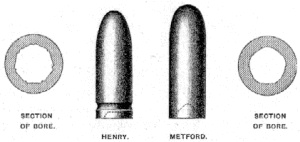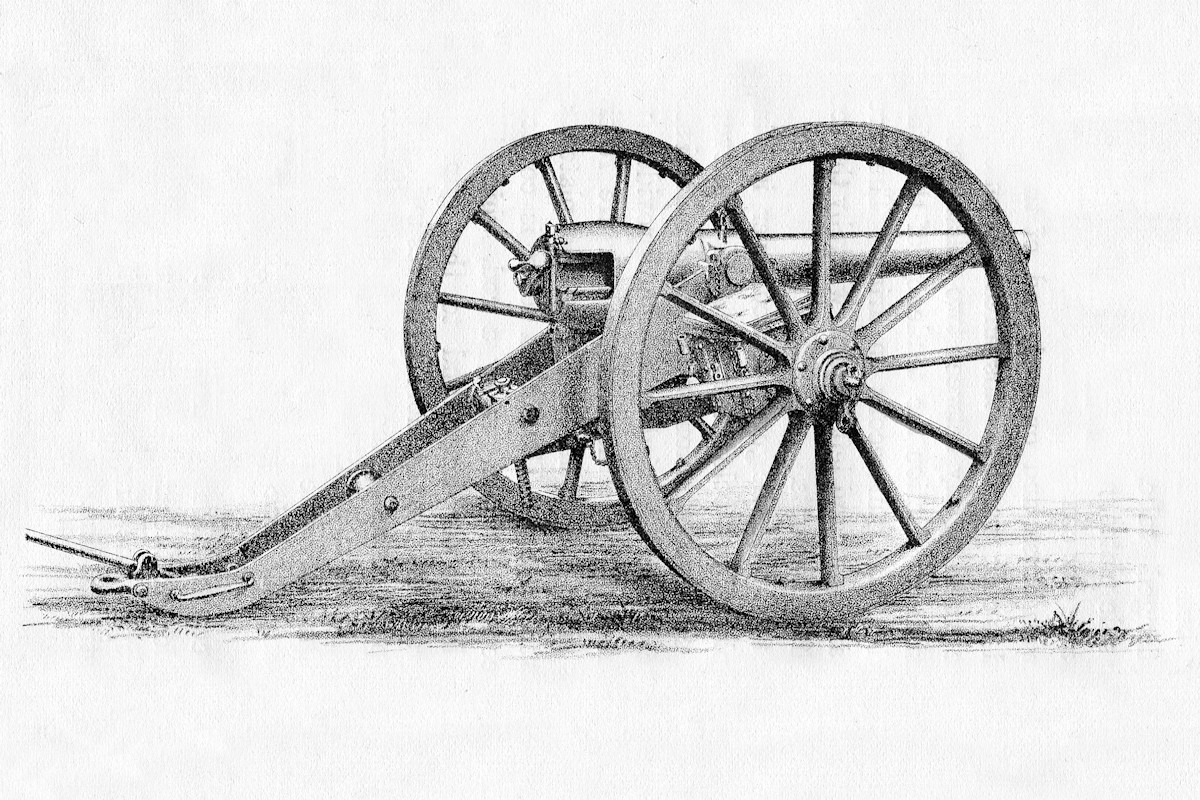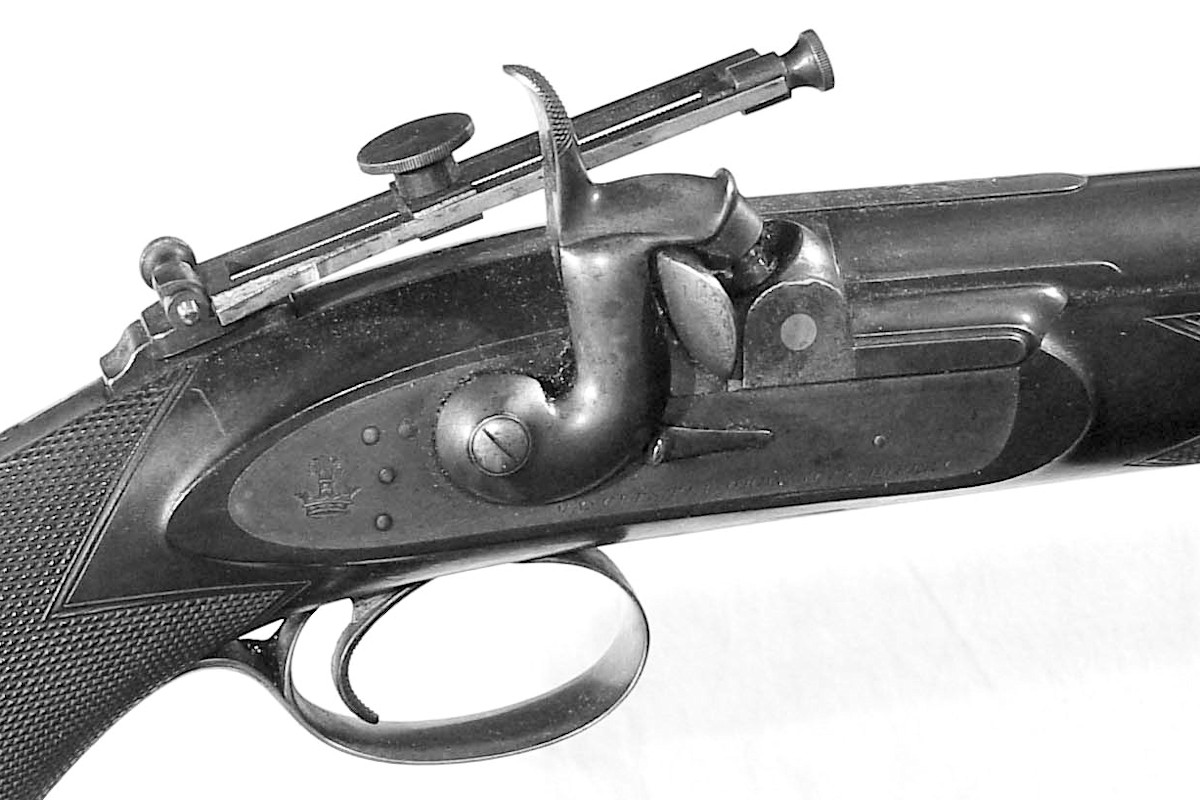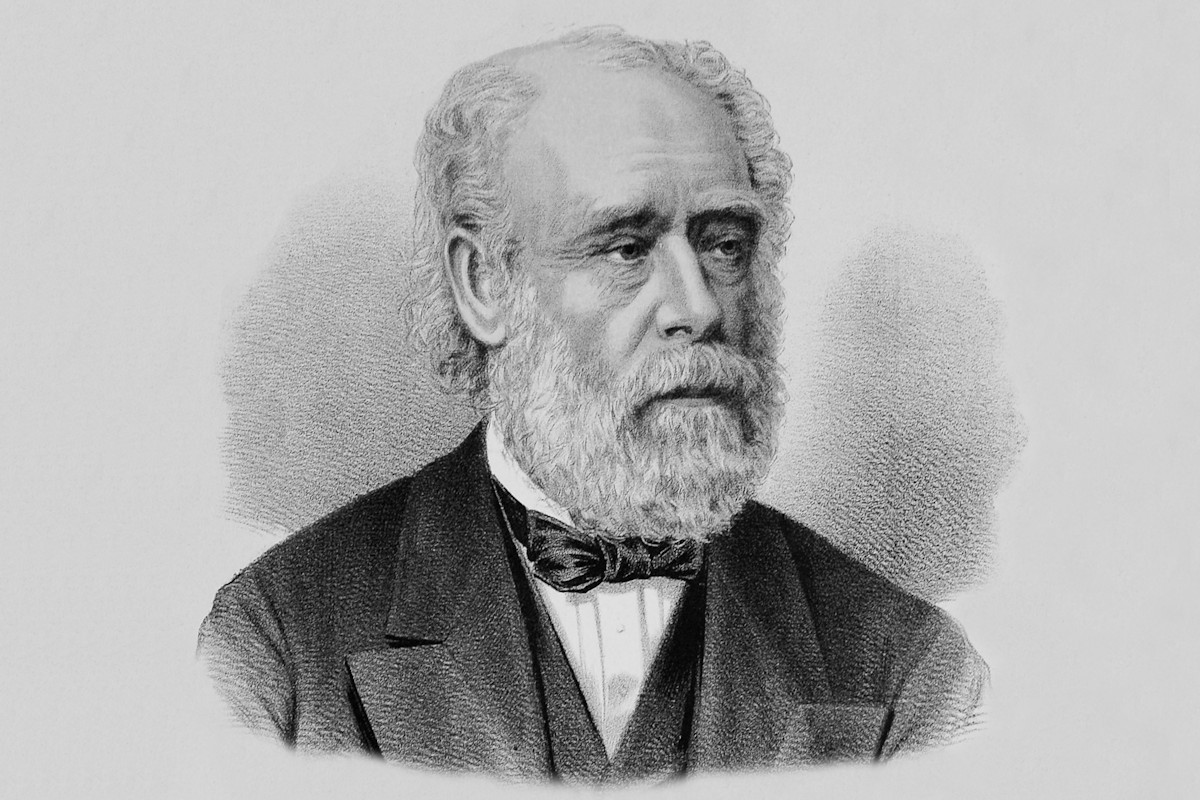Introduction > Comparative Trials > Hythe Trials > Woolwich Trials > Rifle Fired by the Queen > Ordnance Select Committee > Henry & Metford Rifles > Hexagonal Rifling
Henry & Metford Rifles

I here confine myself to pointing out the manner in which my system has been followed in the construction of the Henry and Metford rifles. The drawing shows in section the bore of each gun, as well as the respective bullets.
The Henry rifle has a polygonal bore with seven instead of six sides.
The diameter of a circle touching each flat side of the polygon is .45 of an inch; the maximum diameter of the grooving is .457 of an inch.
The bullet is 2.93 diameters in length.
The twist of the rifling is 1 turn in 22 inches.
When the bullet moulds itself to the form of the rifling, each angular point is cut away by the seven projecting sharp edges which protrude in the barrel at the junction of the sides of the polygon.
This alteration in the rifling of my barrel was no doubt done in order to meet the requirements of a cylindrical hardened lead bullet, which cannot be much upset by the powder. It may be very well for match shooting when in good order. The difference between the maximum and minimum diameters is small, and the amount of upsetting required by the bullet is proportionately less but the use of a steel bullet is rendered impracticable, and the rifling is unsuited for the great wear and tear of a military weapon.
Regarded as a military arm, the additions to my barrel above referred to have nullified its efficiency.
I was the first to use a hardened bullet, but I made it the shape of the barrel, and obtained a mechanical fit, which enabled me to use a steel or any other hardened bullet.
The alteration of the twist from 1 turn in 20 inches to 1 turn in 22 inches, must have been made purely for the sake of alteration. I had found it requisite to go from 1 turn in 78 inches of the Enfield to 1 turn in 20 inches. If the steel bullet is to be considered a matter of importance, I should prefer I turn in 17 inches, because steel requires a higher rotation than lead on account of its less specific gravity.
The Metford rifle has a bore of a cylindrical character. It is made up of a series of cylindrical portions concentric with the axis of the bore, and alternating in size. This provides a series of grooves, five in number, and cylindrical in section, with sharp sloping edges.
The maximum diameter is .47 of an inch, the minimum diameter being .462 of an inch.
The bullet is 3.02 diameters in length.
The barrel is rifled with an increasing twist, commencing at the breech end with 1 turn in 48 inches, and terminating at the muzzle with 1 turn in 16 inches.
It will be remembered that in the Whitworth rifle the bore is hexagonal, the mean diameter is .47 of an inch, the bullet is 3 diameters in length, and the twist of the rifling is 1 turn in 20 inches.


